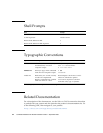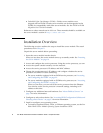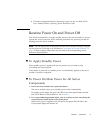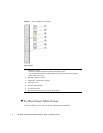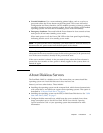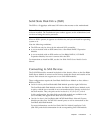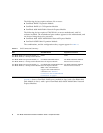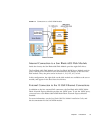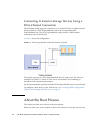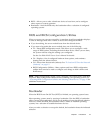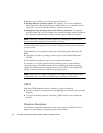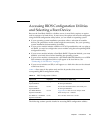
6 Sun Blade X6450 Server Module Installation Guide • September 2008
■ Installing the operating system on a remote drive, which might be in the chassis
(connected through the SAS-NEM module to a Sun Blade 6000 Disk Module) or
outside the chassis, in a storage device such as a SAN. See “Connecting to SAS
Devices” on page 7 and “Connecting to Exterior Storage Devices Using a Fibre
Channel Connection” on page 10
The following sections describe methods of configuring remote drives:
■ “Connecting to SAS Devices” on page 7.
■ “Connecting to Exterior Storage Devices Using a Fibre Channel Connection”
on page 10.
After you have configured one or more remote drives, you can proceed with the
operating system installation. From the point of view of the operating system
installation, when remote drives are installed and configured correctly, they operate
the same as local drives. They should appear in the list when the operating system
installation procedure queries for where to install the operating system.
If the operating system installation procedure requires you to select a boot device in
the BIOS, see “Accessing BIOS Configuration Utilities and Selecting a Boot Device”
on page 13.
Compact Flash Drive
The Sun Blade X6450 is equipped with a compact flash device that can support some
operating systems. It is the only local option for installing an operating system.
The following operating systems support booting from compact flash:
■ S10 U4 (64-bit) or later
■ RHEL4.6 (32/64-bit) or later
■ RHEL5.0 (64-bit) or later
■ SLES9Sp4 (64-bit)
■ SLES10 sp1 (64-bit) or later
■ VMware ESX 3.0.2+
■ Windows 2003 32- and 64-bit
The compact flash drive supports a finite number of writes before its performance
degrades. You can mitigate the limited number of writes by configuring it to redirect
the log files (the /var and /tmp directories) to another location. See your operating
system documentation for details.



